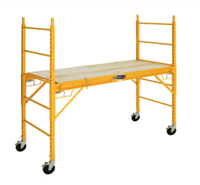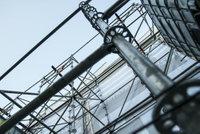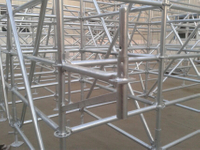Content Menu
● Introduction to Cuplock Scaffolding
● Key Components of Cuplock Scaffolding
● Standard Materials Used
● Cuplock Scaffolding Parts Price List
● Benefits of Cuplock Scaffolding
● Applications of Cuplock Scaffolding
● Safety Considerations
● Safety Regulations
● Maintenance and Storage
● Conclusion
● FAQ
>> 1. What is the standard material for cuplock scaffolding?
>> 2. What are the typical dimensions of cuplock scaffolding pipes?
>> 3. What is the most common surface treatment for cuplock scaffolding?
>> 4. What are the benefits of using cuplock scaffolding?
>> 5. How does the cuplock system enhance safety?
● Citations:
Cuplock scaffolding is a widely used modular scaffolding system in the construction industry, known for its efficiency, versatility, and safety. It consists of various components such as standards, ledgers, braces, and planks, all connected through a unique cuplock mechanism. This article will delve into the standard materials used for cuplock scaffolding and explore the latest prices for its parts.
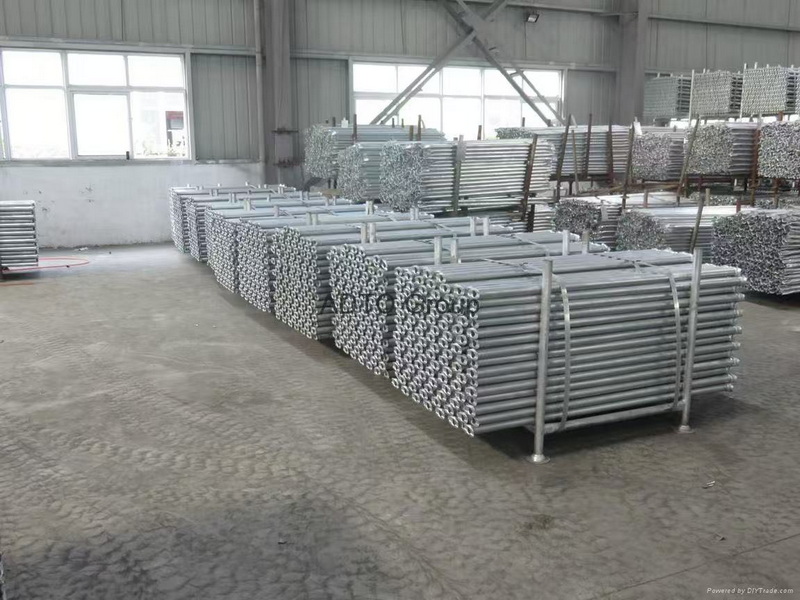
Introduction to Cuplock Scaffolding
Cuplock scaffolding is favored for its quick assembly and disassembly, making it a time-saving solution in construction projects. The system is composed of vertical standards, horizontal ledgers, diagonal braces, and planks, all made from high-quality steel.
Key Components of Cuplock Scaffolding
- Standards: These are the vertical components, typically made from 48.3mm diameter pipes with a thickness of 3.2mm or 4.0mm for higher load capacities. They are equipped with top and bottom cups for connecting ledgers and braces.
- Ledgers: These are horizontal components that connect to the standards using the cup-node system. They also have a diameter of 48.3mm and a thickness of 3.2mm.
- Braces: Diagonal braces provide additional stability to the structure. They are typically made from 48.3mm diameter pipes with a thickness of 2.5mm.
- Planks: These are the platforms on which workers stand. They are typically made from wood or aluminum.
Standard Materials Used
The standard material for cuplock scaffolding is high-quality steel, often in grades such as S355 or Q355, which offer high yield and tensile strength. The pipes used are typically 48.3mm in diameter with a thickness of 3.2mm or 4.0mm for higher load capacities.
- S355 (or Q355): This is a high-strength steel grade commonly used for cuplock scaffolding, providing excellent durability and load-bearing capacity.
- S235: This grade is also used but offers lower strength compared to S355.
- Hot-Dip Galvanized: This is the most common surface treatment for cuplock scaffolding, providing a durable and corrosion-resistant finish.
Cuplock Scaffolding Parts Price List
The prices for cuplock scaffolding parts can vary based on factors such as material quality, manufacturer, and location. Here is a general overview of what you might expect:
- Standards: Prices can range from $10 to $20 per piece, depending on the length and thickness.
- Ledgers: Typically priced between $8 and $15 per piece.
- Braces: Generally cheaper, ranging from $5 to $10 per piece.
- Planks: Prices vary widely based on material and size, but typically range from $10 to $30 per plank.
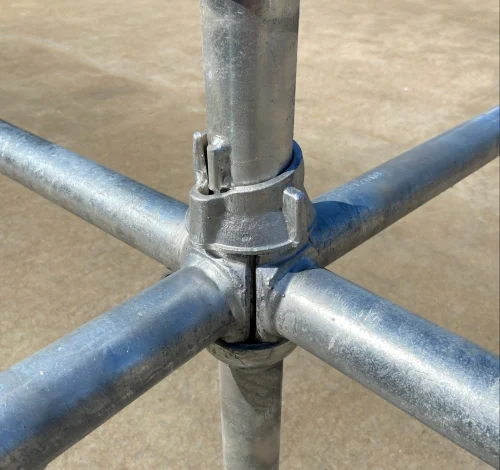
Benefits of Cuplock Scaffolding
Cuplock scaffolding offers several benefits that make it a preferred choice in the construction industry:
- Lightweight and Portable: Cuplock scaffolding is 20% lighter than traditional scaffolding, making it easier to transport and handle on-site.
- Efficient Assembly: The cuplock system allows for quick and easy assembly, saving up to 50% of construction time compared to traditional systems.
- Versatility: Cuplock scaffolding can be adapted to various configurations, making it suitable for a wide range of applications, including facade scaffolding, formwork support, and mobile scaffolding.
Applications of Cuplock Scaffolding
Cuplock scaffolding is versatile and can be used in various construction projects:
- Facade Scaffolding: Ideal for exterior work on buildings, providing a stable platform for painting, repairs, or maintenance.
- Formwork Support: Used to support formwork for concrete structures, ensuring stability during the curing process.
- Mobile Scaffolding: Suitable for projects requiring frequent relocation, such as road construction or maintenance work.
Safety Considerations
Safety is paramount when using cuplock scaffolding. Here are some key considerations:
- Regular Inspections: Regularly inspect the scaffolding for any damage or wear to ensure it remains safe for use.
- Proper Assembly: Ensure that the scaffolding is assembled correctly according to the manufacturer's instructions.
- Training: Ensure that all personnel using the scaffolding are properly trained.
Safety Regulations
Compliance with safety regulations is crucial. Here are some guidelines:
- OSHA Standards: In the U.S., scaffolding must comply with OSHA standards, which include requirements for scaffolding design, assembly, and use.
- EN 12811: In Europe, scaffolding must meet the standards outlined in EN 12811, which covers requirements for scaffolding performance and safety.
Maintenance and Storage
Proper maintenance and storage are essential to extend the lifespan of cuplock scaffolding:
- Cleaning: Regularly clean the scaffolding to remove dirt and debris that could affect its performance.
- Storage: Store scaffolding components in a dry area to prevent corrosion.
Conclusion
Cuplock scaffolding is a versatile and efficient system that offers numerous benefits in terms of speed, safety, and cost-effectiveness. Its standard materials, such as high-quality steel grades like S355 or Q355, ensure durability and strength. When selecting cuplock scaffolding, it's essential to consider factors like material quality, manufacturer experience, and compliance with safety standards.
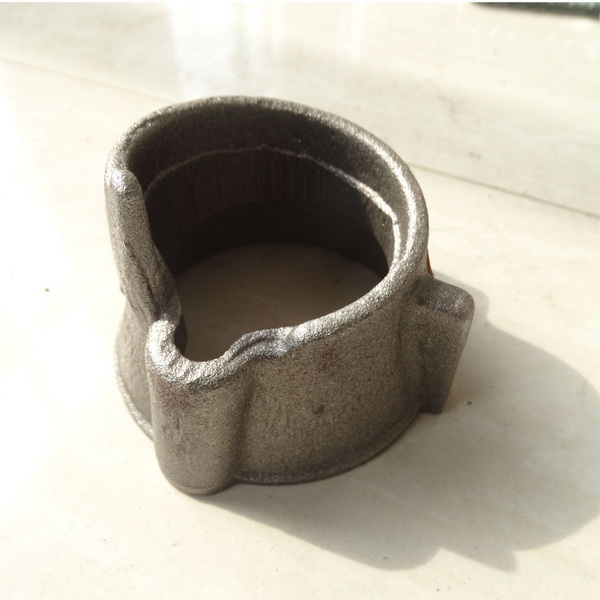
FAQ
1. What is the standard material for cuplock scaffolding?
The standard material for cuplock scaffolding is high-quality steel, often in grades such as S355 or Q355, which offer high yield and tensile strength.
2. What are the typical dimensions of cuplock scaffolding pipes?
The pipes used are typically 48.3mm in diameter with a thickness of 3.2mm or 4.0mm for higher load capacities.
3. What is the most common surface treatment for cuplock scaffolding?
The most common surface treatment is hot-dip galvanizing, which provides a durable and corrosion-resistant finish.
4. What are the benefits of using cuplock scaffolding?
Cuplock scaffolding is lightweight, offers efficient assembly, and is versatile for various applications, making it a cost-effective choice.
5. How does the cuplock system enhance safety?
The cuplock system enhances safety by allowing up to four horizontals to be securely locked into place with a single hammer stroke, eliminating loose clips or bolts.
Citations:
[1] https://www.tp-scaffold.com/what-is-the-standard-material-for-cuplock-scaffolding.html
[2] https://www.youtube.com/watch?v=wBKilb9ALEY
[3] https://primesteeltech.co.in/what-is-cuplock-scaffolding.html
[4] https://www.alibaba.com/showroom/cuplock-scaffolding-system.html
[5] https://www.wm-scaffold.com/cuplock-scaffolding-standard.html
[6] https://www.youtube.com/watch?v=QSKy3RkmKs8
[7] https://rapid-scafform.com/cuplock-scaffold/
[8] https://www.alibaba.com/showroom/cuplock-scaffolding-design.html
[9] https://www.wm-scaffold.com/cup-lock-scaffold.html
[10] https://www.youtube.com/watch?v=2FbwLFj1aFY
[11] https://www.youtube.com/watch?v=rdJ26vZ4CL4













